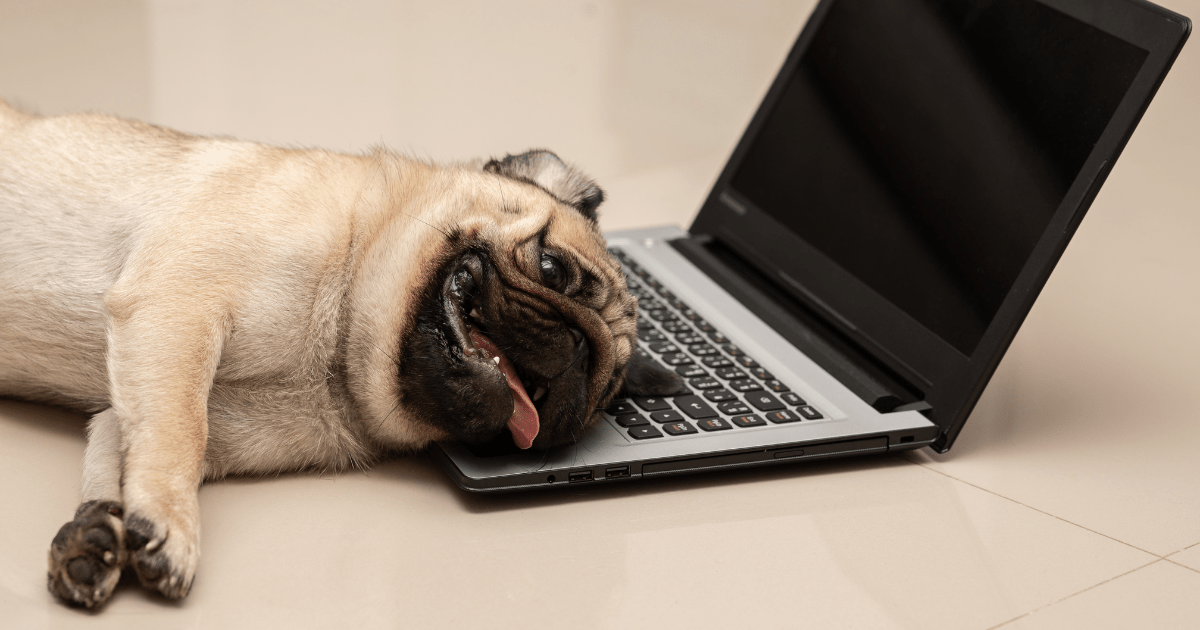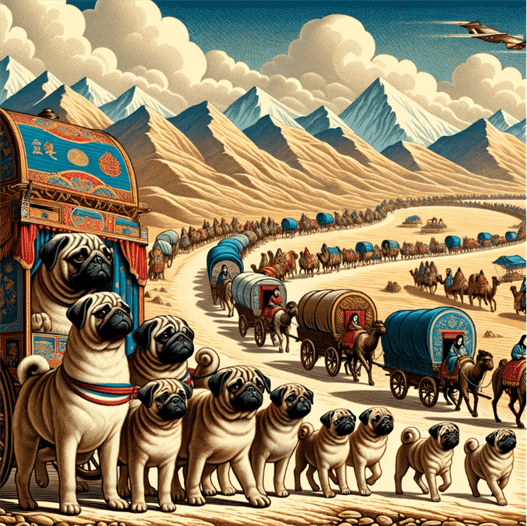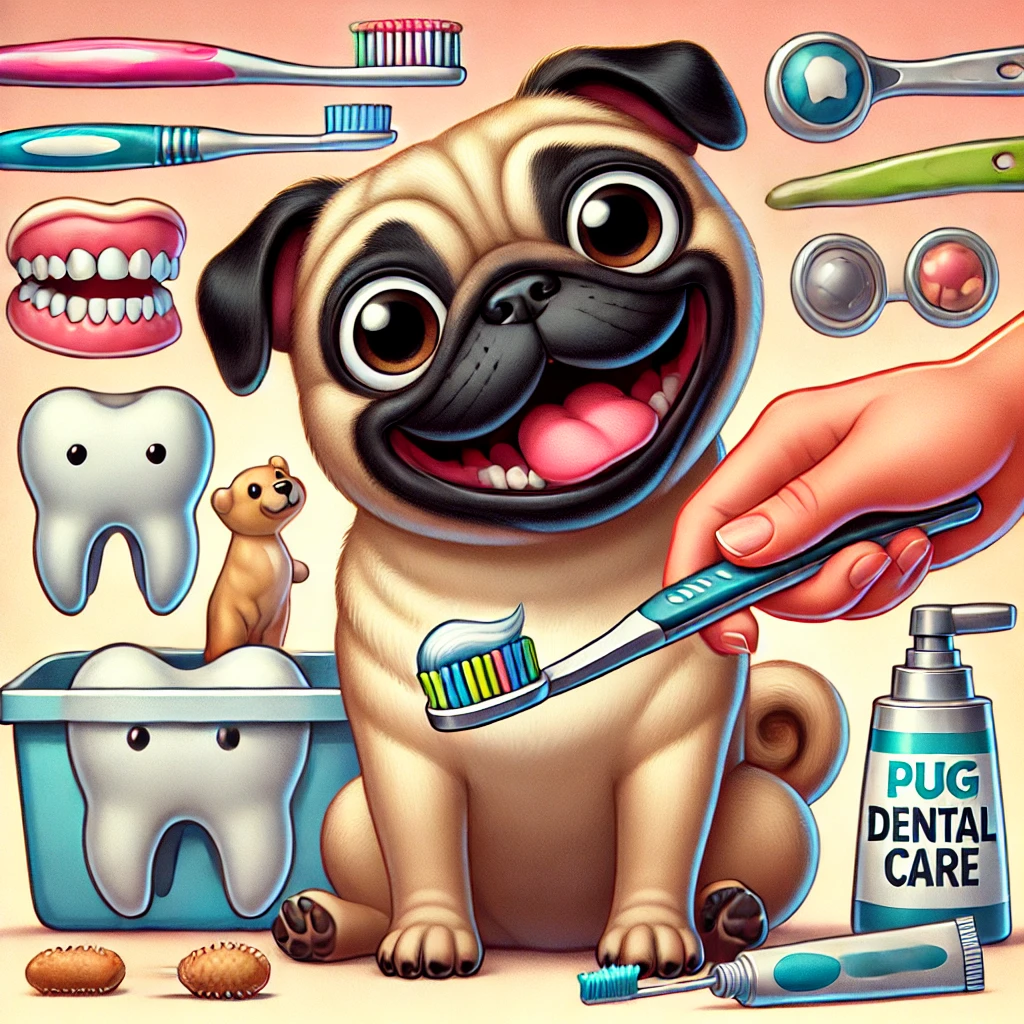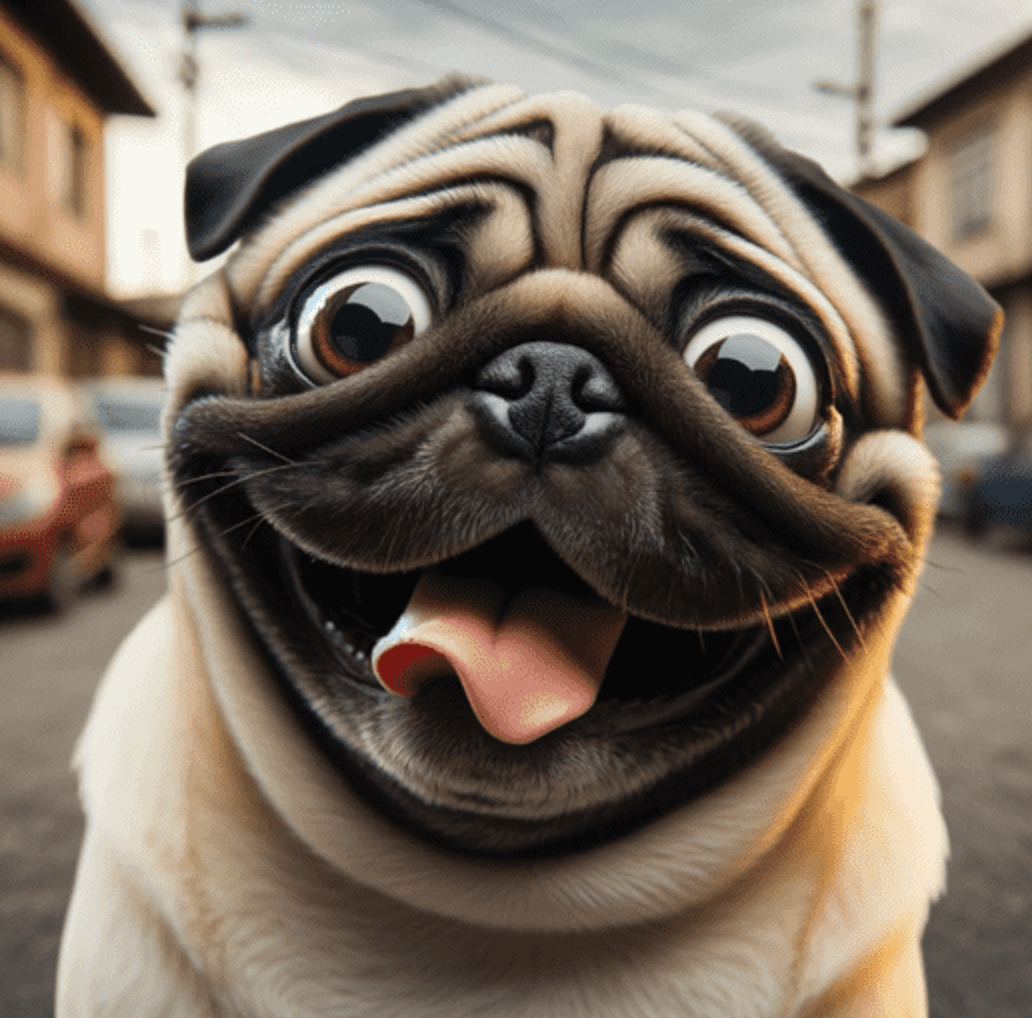- Understanding Why Training a Stubborn Pug Can Be Challenging
- Understanding Stubborn Behavior in Training Stubborn Pugs
- Positive Reinforcement Techniques for Training Stubborn Pugs
- Overcoming Challenges in Training Stubborn Pugs
- Effective Commands and Cues for Training Stubborn Pugs
- Importance of Patience and Consistency in Training Stubborn Pugs
- Step-by-Step Training Plan for Pug Training Success
- Incorporating Mental and Physical Stimulation into Training
- Socializing a Stubborn Pug for Better Training Results
- Using Crate Training to Manage Stubborn Behavior
- FAQs About Training Stubborn Pugs
- Why is my pug so stubborn?
- What is the best way to motivate my stubborn pug during training?
- How can I teach my pug to come when called?
- What should I do if my pug ignores commands?
- Is crate training helpful for stubborn pugs?
- Can stubborn pugs be trained to walk on a leash?
- How long should training sessions be for a stubborn pug?
- Why does my pug only follow commands when I have treats?
- What are some common mistakes to avoid when training a stubborn pug?
- Can I socialize my stubborn pug with other dogs to improve training?
Understanding Why Training a Stubborn Pug Can Be Challenging
Pugs are known for their charming and quirky personalities, but this breed is also famous for their stubborn streak. While their adorable faces and lovable nature win over most pug owners, training a stubborn pug can be a real challenge. Pugs are intelligent dogs, but they are also independent and, at times, strong-willed, which can make them more difficult to train compared to other breeds.
Stubborn behavior in pugs often stems from their desire to do things on their own terms. This independent nature means that while pugs are perfectly capable of learning commands and good behavior, they may choose not to follow through, especially if they don’t see an immediate reward or benefit. In many cases, pugs will respond to commands if it aligns with what they already want to do, but if they sense that the task isn’t enjoyable or rewarding, they may resist.
That said, training a stubborn pug is entirely possible with the right approach. It’s about understanding their personality, using positive reinforcement, and exercising patience and consistency. With the right strategies, even the most stubborn pugs can be transformed into well-behaved companions. In this guide, we will cover the most effective methods for training stubborn pugs, including the importance of using positive reinforcement, overcoming common challenges, and creating a structured training plan that works.
Understanding Stubborn Behavior in Training Stubborn Pugs
To effectively train a stubborn pug, it’s important to first understand why this behavior occurs. Stubbornness in pugs is often a result of their intelligence combined with their strong sense of independence. Here are some key traits that contribute to a pug’s stubborn behavior:
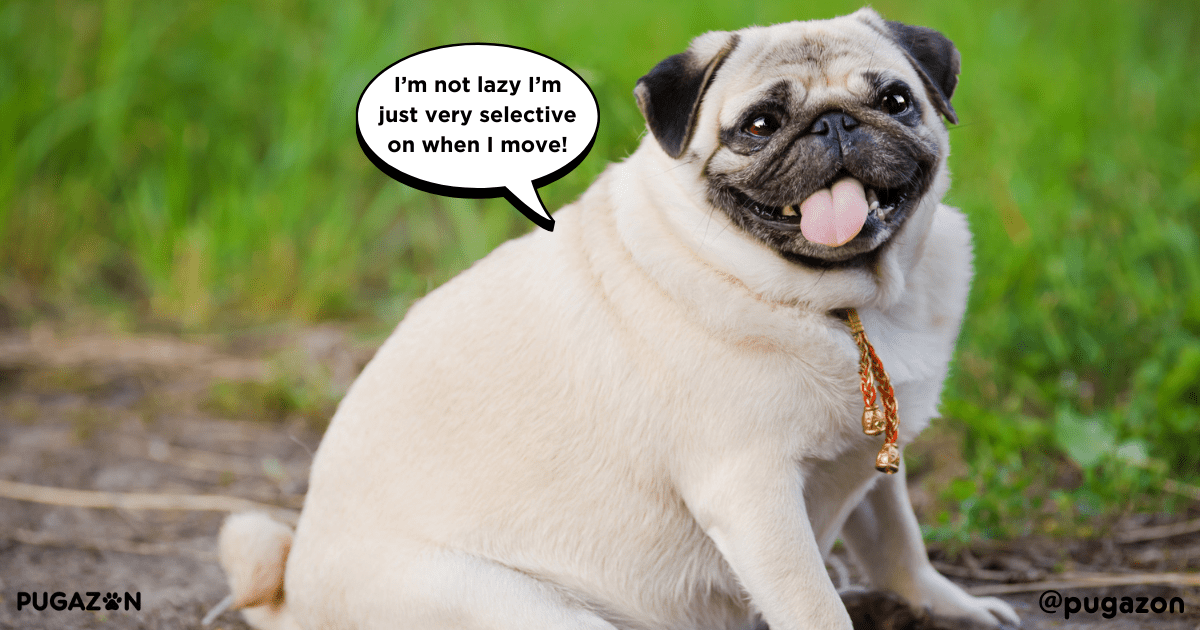
Independent Nature in Pug Training
Pugs are known for their ability to think independently, which means they often make decisions based on what suits them best at the moment. This independent streak can sometimes be mistaken for defiance, but it’s simply a result of their desire to be in control of their actions.
Desire for Immediate Rewards During Pug Training
Pugs are motivated by food and positive reinforcement, but they also expect instant gratification. If they don’t receive a reward immediately after performing a task, they may lose interest and stop following commands. This behavior can make it seem like they are stubborn, but it’s simply a reflection of their need for motivation.
Selective Listening in Training Stubborn Pugs
Pugs are intelligent and capable of learning, but they also tend to pick and choose when they want to listen. They may ignore commands if they are distracted or if they feel there’s something more interesting happening around them. This selective listening can make it challenging to get them to focus during training sessions.
Common Stubborn Behaviors in Pugs
Pugs may display a variety of stubborn behaviors that can interfere with training. Here’s a table outlining common stubborn behaviors and their underlying causes:
Behavior | Possible Cause | Training Tip |
Ignoring commands | Lack of immediate reward, distraction | Use high-value treats and keep sessions short. |
Refusing to follow the leash | Feeling restricted, boredom | Use positive reinforcement and introduce new environments. |
Barking when given a command | Seeking attention, frustration | Stay calm and avoid reacting to barking. |
Stopping mid-training session | Overstimulation or fatigue | Keep sessions short and gradually increase the length. |
By understanding these traits and behaviors, you can tailor your training approach to better suit your pug’s personality.
Positive Reinforcement Techniques for Training Stubborn Pugs
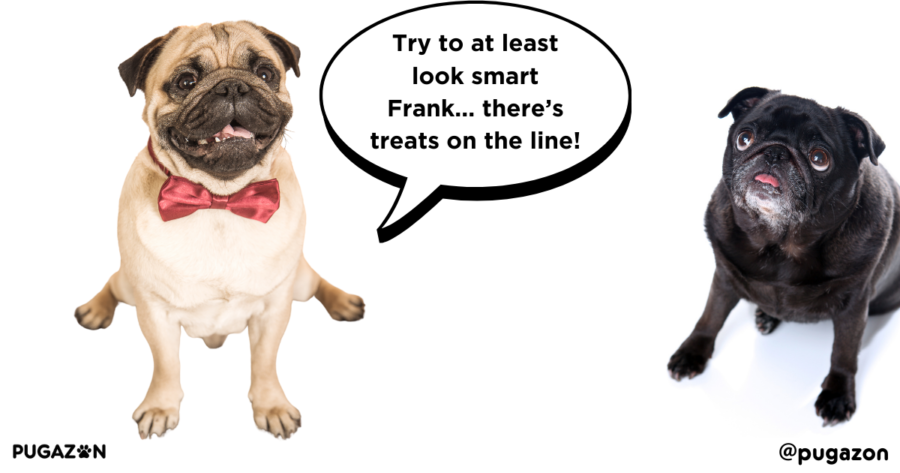
When it comes to training stubborn pugs, positive reinforcement is the most effective strategy. Unlike punishment-based methods, which can cause fear and anxiety, positive reinforcement encourages good behavior by rewarding the pug for following commands. Pugs are motivated by food, affection, and praise, making this method particularly successful for them.
How Positive Reinforcement Works in Pug Training
Positive reinforcement involves rewarding your pug immediately after they perform the desired behavior. This can be in the form of treats, verbal praise, or physical affection. The key is to consistently reward the behavior you want to see, so your pug associates that action with positive outcomes.
Step-by-Step Guide for Positive Reinforcement in Training
- Step 1: Choose High-Value Rewards
Pugs are particularly food-motivated, so using treats during training can be very effective. Choose small, soft treats that are easy to eat quickly to avoid interrupting the flow of the training session. If your pug isn’t motivated by treats, try using toys or praise instead. - Step 2: Reward Immediately
Timing is everything with positive reinforcement. Make sure to reward your pug immediately after they perform the desired behavior, so they clearly associate the action with the reward. - Step 3: Be Consistent
Consistency is key when using positive reinforcement. Make sure to reward the same behavior every time, especially in the early stages of training. Over time, your pug will learn that good behavior consistently leads to positive outcomes.
Overcoming Challenges in Training Stubborn Pugs
Training a stubborn pug can present a variety of challenges, from resistance to commands to short attention spans. However, with the right strategies and patience, these challenges can be effectively managed. Below are common training issues encountered with pugs and practical solutions to overcome them.
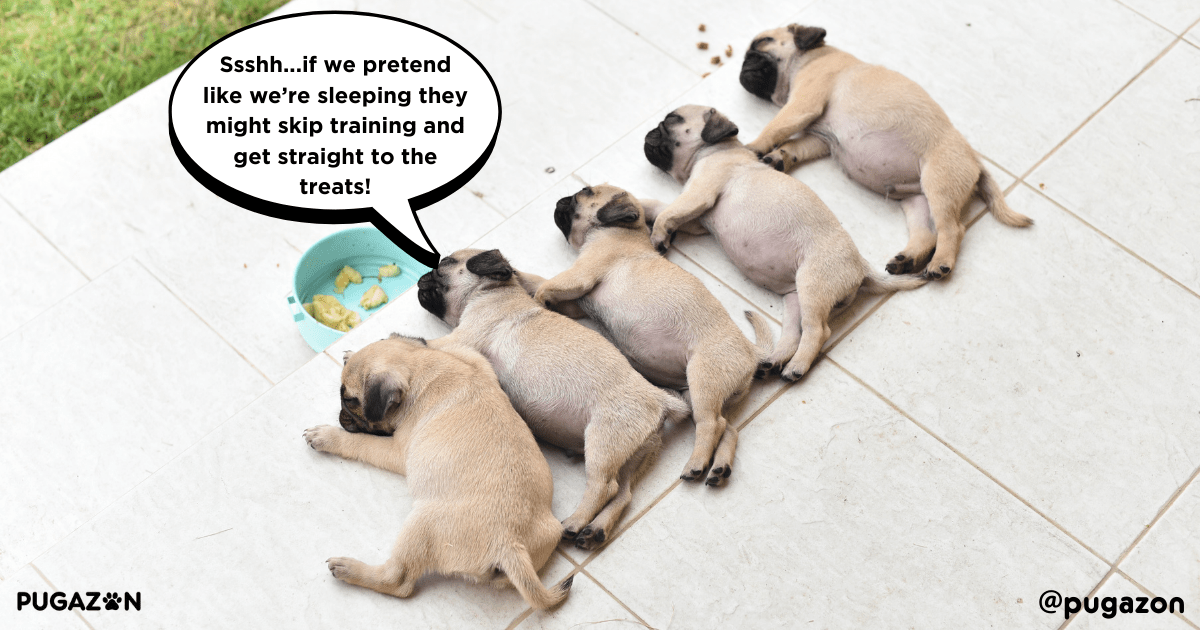
Pugs Resistance to Commands
One of the most frequent issues when training pugs is their resistance to commands. This can look like ignoring instructions or being completely uninterested in participating.
- Solution: Break training into short, focused sessions. Pugs tend to have short attention spans, so aim for 5-10 minute sessions several times a day rather than long, drawn-out training periods. Use high-value treats that will keep your pug engaged and interested in following commands. Introduce commands slowly, starting with basic ones like “sit” and “stay,” and ensure they master these before moving on to more complex behaviors.
Distractibility of Pugs
Pugs are naturally curious and easily distracted by their surroundings. Whether it’s a loud noise, another dog, or something interesting on the ground, getting a pug to focus during training can be a challenge.
- Solution: Use low-distraction environments when starting training. Begin in a quiet room where your pug won’t be tempted by other stimuli, and gradually introduce more distractions as they become more comfortable with commands. Incorporate focus exercises, such as the “look at me” command, to teach your pug to focus on you rather than distractions.
Stubbornness and Defiance of Pugs
Pugs are intelligent but can sometimes be too smart for their own good, leading them to push boundaries or outright refuse to follow commands, especially when they don’t see an immediate reward.
- Solution: Consistency is key here. Ensure that you are rewarding good behavior immediately and using positive reinforcement consistently. If your pug refuses to comply, avoid punishing them, as this can lead to negative associations with training. Instead, stay calm, reset the situation, and try again. Keeping training upbeat and rewarding will help your pug feel more motivated to comply.
Short Attention Span
Pugs can lose focus quickly, especially if they feel training has gone on too long or they are not being rewarded regularly.
- Solution: Keep training sessions short and fun. Use toys, treats, or even short play breaks between commands to keep your pug engaged. It’s better to have multiple short training sessions throughout the day rather than one long, exhausting one.
Potty Training Challenges for Pugs
Many pug owners struggle with potty training due to the breed’s occasional stubbornness and preference for comfort.
- Solution: Use crate training to reinforce potty habits. Pugs don’t like soiling their living space, so using a crate encourages them to hold it until they are outside. Be consistent with potty breaks, especially after meals and naps, and reward your pug immediately after they relieve themselves outside.
Challenge | Possible Cause | Solution |
Resistance to commands | Lack of motivation or interest | Use high-value treats, keep sessions short and engaging. |
Easily distracted | Curiosity, outside stimuli | Start in low-distraction environments and build up. |
Defiant or uncooperative | Lack of immediate reward | Consistency and positive reinforcement. |
Short attention span | Overstimulation or boredom | Keep sessions to 5-10 minutes with frequent rewards. |
Potty training issues | Lack of routine or clear boundaries | Use crate training and reward immediately after outdoor potty. |
Last update on 2025-02-11 / * Affiliate links / Image source: Amazon Product Advertising API
Effective Commands and Cues for Training Stubborn Pugs
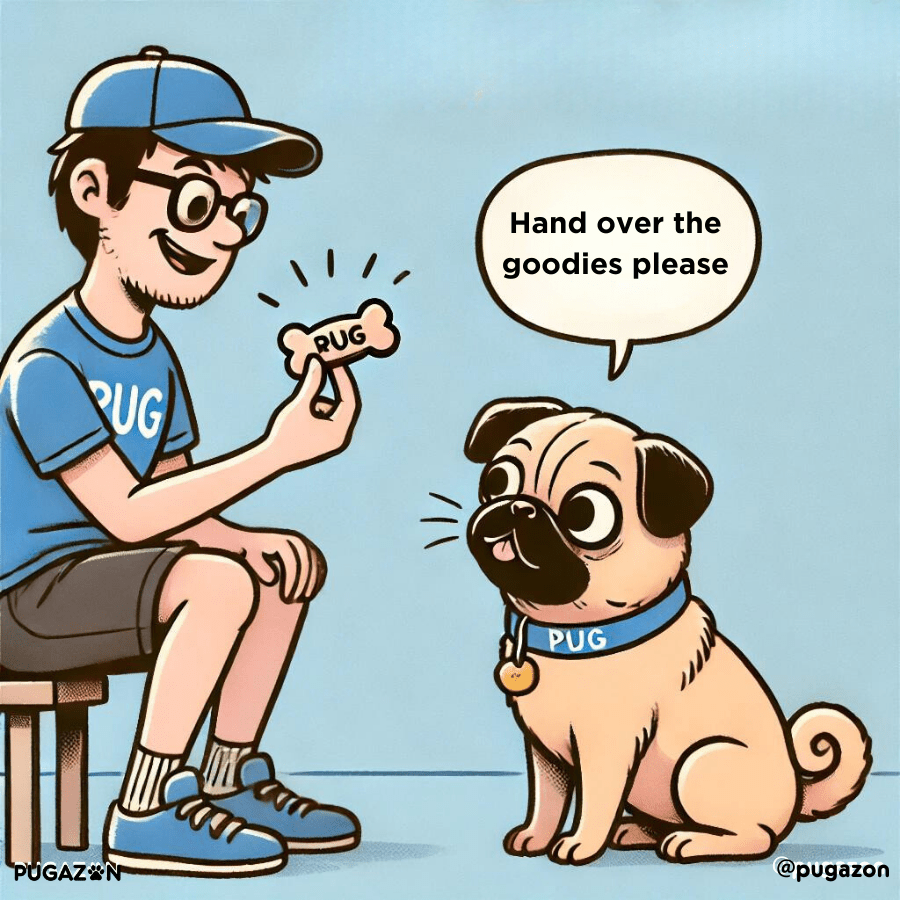
When training a stubborn pug, the way you deliver commands can have a big impact on how your pug responds. Pugs are sensitive to tone, body language, and consistency, so using the right commands and cues is essential for successful training.
Keep Commands Clear and Consistent
When training your pug, make sure to use the same command words for each action. Using different variations (e.g., “come here” vs. “come”) can confuse your pug. Stick to short, simple commands like “sit,” “stay,” “come,” and “down.”
- Tip: Use a firm but calm tone when giving commands. Avoid yelling or sounding frustrated, as this may cause anxiety and resistance in your pug.
Use Hand Signals
Pugs respond well to visual cues, so pairing hand signals with verbal commands can be particularly effective. This is especially useful if your pug becomes distracted or isn’t focusing on your voice alone.
- Command Example:
- Sit: Hold your hand palm-up in front of your pug’s nose and lift it slightly to signal “sit.”
- Stay: Extend your hand in front of your pug, palm facing them, while giving the “stay” command.
The “Look at Me” Command
Training a stubborn pug to focus on you can be a game changer when dealing with distractions. The “Look at Me” command teaches your pug to make eye contact, which helps regain their focus during training.
- How to Train:
- Hold a treat near your face and say, “look at me.”
- Wait for your pug to make eye contact before giving them the treat.
- Repeat several times, gradually increasing the time they hold eye contact.
Use Positive Cues for Recall Commands
Recall (the “come” command) can be one of the hardest commands to teach stubborn pugs, especially when they’re focused on something else. It’s important to make the “come” command sound positive and fun, rather than like a punishment.
- Tip: Always reward your pug when they come to you, even if they take their time. Use an excited, upbeat tone when calling them to encourage enthusiasm.
Avoid Overloading Commands
Pugs can become overwhelmed if they’re given too many commands at once. Focus on one behavior at a time, mastering basic commands before introducing more complex ones.
- Example: Teach “sit” before moving on to “stay” or “down.” This ensures your pug fully understands one command before being asked to perform another.
Importance of Patience and Consistency in Training Stubborn Pugs
Patience and consistency are two of the most critical components when training a stubborn pug. While it may be tempting to rush through training or get frustrated when progress isn’t immediate, sticking to a regular routine and staying patient will pay off in the long run. Below are tips and strategies for integrating patience and consistency into your training program.
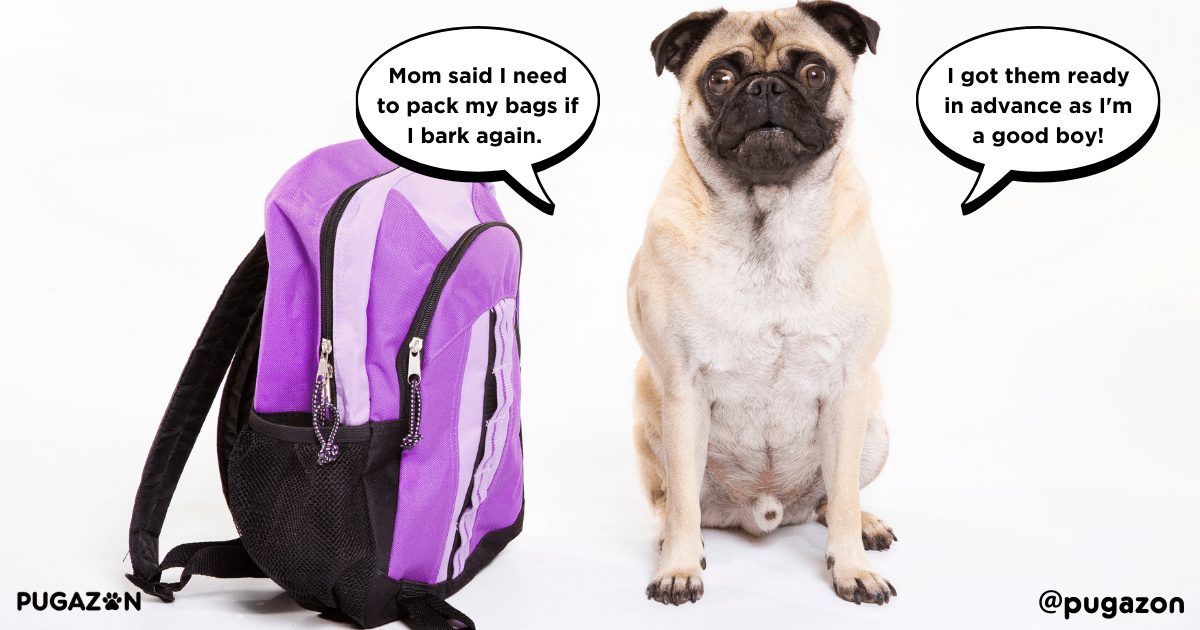
Why Patience is Key in Pug Training
Pugs can be slow to pick up on new commands, especially if they’re not immediately motivated by food or rewards. However, a calm and patient approach will help keep your pug from becoming anxious or frustrated during training sessions.
- Tip: Always take breaks when you notice your pug is losing focus or becoming bored. Trying to push through when they’re distracted or tired will only create a negative experience and delay progress. Keeping training sessions positive and light will build confidence and help your pug associate training with fun.
Stick to a Routine
Consistency is essential for building habits. Pugs respond well to structure, and having a set schedule for training, meals, and exercise helps them understand expectations.
- Daily Routine Example:
- Morning: Brief 5-10 minute training session focusing on simple commands like “sit” or “stay.”
- Afternoon: A quick session practicing recall commands during a walk or playtime in the yard.
- Evening: A short session with treats focusing on reinforcing the day’s learned behaviors.
Training pugs at the same times every day helps reinforce the behaviors you want to teach and sets clear boundaries for when it’s time to learn versus when it’s time to play.
Positive Reinforcement and Consistency for Pugs
Always use positive reinforcement to reward the behaviors you want to see more of. Pugs respond well to treats and praise, so make sure to reward them immediately after they perform a desired behavior.
- Tip: If you skip rewards for behaviors your pug has already learned, they may begin to ignore commands. Even once they’ve mastered a behavior, occasional rewards will keep them engaged.
Avoid Reinforcing Bad Habits
It’s important to be consistent in how you respond to stubborn or unwanted behavior. For example, if your pug barks for attention and you give in by rewarding them with playtime, you’re reinforcing the bad behavior. Instead, wait until your pug is calm and quiet before giving them attention.
- Tip: Consistently ignore unwanted behaviors like barking or jumping until your pug exhibits the correct behavior, such as sitting calmly. Then reward them to reinforce the positive action.
Always Stay Up to Date
Step-by-Step Training Plan for Pug Training Success
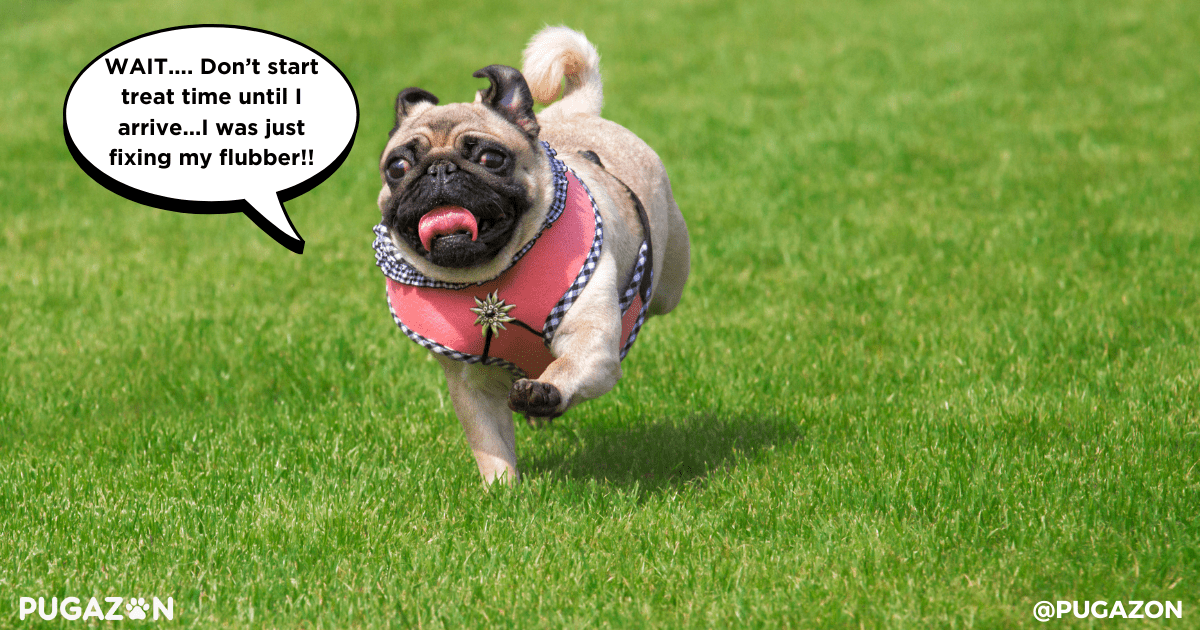
A structured, step-by-step training plan is essential when working with stubborn pugs. By breaking down training into manageable steps, you can help your pug gradually master commands and behaviors without becoming overwhelmed or frustrated. Below is a sample four-week training plan to help guide you through the process.
Week 1: Focus on Basic Commands
During the first week, focus on teaching your pug the most basic commands, such as “sit,” “stay,” and “come.” Keep training sessions short and reward immediately after your pug follows through with a command.
- Day 1-3: Introduce “sit.” Hold a treat above your pug’s nose, lift it slightly, and wait for them to sit. As soon as they do, reward them.
Day 4-7: Practice “stay.” Once your pug is sitting, extend your hand, say “stay,” and reward them for staying still for a few seconds. Gradually increase the duration.
Week 2: Introduction to Leash Training
Pugs can be notoriously stubborn on walks, especially if they feel like they’re being controlled by a leash. Start introducing leash training slowly during this week.
- Day 1-3: Attach the leash and allow your pug to get used to the feeling while walking around the yard or inside.
- Day 4-7: Begin practicing “heel” by rewarding your pug for walking next to you. Keep the leash short and provide treats when they follow at your pace.
Week 3: Practice Recall and Focus on Distractions
Now that your pug has a basic understanding of commands and leash walking, you can begin working on recall and handling distractions.
- Day 1-3: Practice “come” in a distraction-free environment, such as indoors. Use a positive, upbeat tone and reward your pug when they come to you.
- Day 4-7: Gradually introduce distractions, such as a toy or another person. Call your pug and reward them for coming to you despite the distraction.
Week 4: Reinforce Training and Introduce Advanced Commands
In the final week, reinforce everything your pug has learned by incorporating more advanced commands like “down” or longer “stay” durations.
- Day 1-3: Practice longer “stay” commands, gradually increasing the time and distance between you and your pug before giving the release command.
- Day 4-7: Introduce “down” by holding a treat near the ground and guiding your pug into a lying position.
Incorporating Mental and Physical Stimulation into Training
Stubborn behavior in pugs is often the result of boredom or lack of stimulation. Incorporating mental and physical activities into your training routine can help reduce stubborn tendencies and keep your pug engaged and happy. Below are some ways to combine exercise with training.
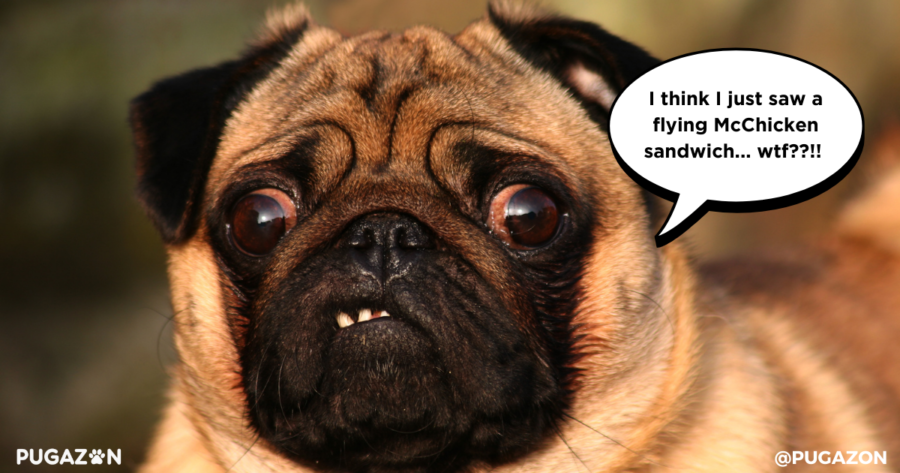
Mental Stimulation through Puzzle Toys
Pugs love food, which makes puzzle toys an excellent way to provide mental stimulation. Toys that require them to figure out how to get a treat out of a compartment can keep them entertained for long periods and help improve their focus.
- Tip: Use puzzle feeders during mealtimes to slow down your pug’s eating and engage their problem-solving skills.
Physical Exercise through Interactive Play
Interactive games like fetch, tug-of-war, and hide-and-seek are great ways to tire out a stubborn pug. These activities can also be used as rewards during training sessions.
- Activity Example: Play a short game of fetch as a reward after your pug successfully completes a training task. This helps reinforce the idea that good behavior leads to fun.
Structured Walks
A walk is more than just exercise—it’s an opportunity to reinforce training commands. Practice “heel” and “stay” during your daily walks, rewarding your pug for walking calmly beside you or sitting when asked.
Tip: Walks in new environments provide both physical and mental stimulation as your pug gets to explore new sights and smells.
Obstacle Courses for Physical and Mental Engagement
Setting up a simple obstacle course in your yard or home can challenge your pug physically and mentally. Use household items like chairs, boxes, or cones to create tunnels, jumps, or weaves that your pug can navigate.
Activity | Type of Stimulation | How It Helps |
Puzzle toys | Mental | Keeps your pug entertained and focused. |
Fetch or tug-of-war | Physical and mental | Provides exercise and reinforces positive behavior. |
Walks with training commands | Physical and mental | Reinforces leash training and recall in real-time. |
Obstacle course | Physical and mental | Engages your pug in problem-solving and movement. |
Socializing a Stubborn Pug for Better Training Results
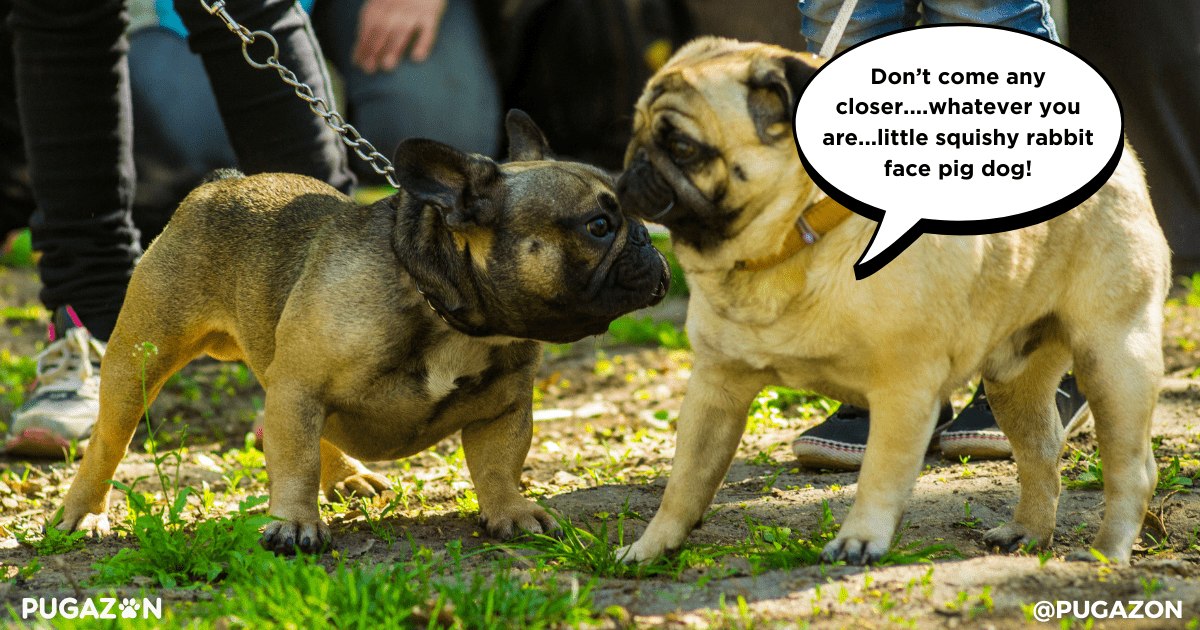
Proper socialization can have a huge impact on training a stubborn pug. Pugs that are well-socialized tend to be more confident, less fearful, and more responsive to commands. Socialization doesn’t only involve introducing your pug to other dogs; it’s about ensuring they’re comfortable with different people, environments, sounds, and experiences.
Early Socialization (Puppies)
Puppyhood is the best time to begin socialization. Pugs that are exposed to a variety of environments and people at a young age tend to adapt better to new situations later in life. During this phase, it’s important to introduce your pug to:
- Other Dogs: Regular playdates with well-mannered dogs help your pug learn how to interact appropriately.
- People: Introduce your pug to different types of people, including children, men, women, and people in hats or uniforms.
- Environments: Expose your pug to different settings, such as parks, sidewalks, and busy streets, to ensure they don’t become fearful of new surroundings.
Socializing Adult Pugs
While it’s best to begin socialization early, adult pugs can still benefit from socializing experiences, especially if they exhibit stubborn or anxious behavior. Here are some tips for socializing older pugs:
- Controlled Environments: Start in quiet, familiar areas and slowly introduce more distractions as your pug becomes comfortable.
- Positive Reinforcement: Reward your pug with treats and praise for calm behavior in new environments or when meeting new dogs or people.
- Short, Frequent Outings: Keep initial socialization sessions brief and enjoyable to avoid overwhelming your pug.
Common Socialization Challenges
Socializing a stubborn pug can present unique challenges, including:
- Fearfulness: If your pug is fearful of new people or environments, introduce them gradually to reduce anxiety.
Overexcitement: Some pugs may become overly excited when meeting other dogs or people. In such cases, use commands like “sit” or “stay” to calm them down before interaction.
Phases of Socialization
Socialization should be approached gradually, in phases, to ensure your pug isn’t overwhelmed by new experiences.
Phase | Focus | Goal |
Phase 1: Familiar Settings | Familiarize your pug with basic environments like the home and yard. | Build confidence in known, safe spaces. |
Phase 2: Introductions to People and Pets | Start with quiet, controlled introductions to people and dogs. | Encourage calm interactions with rewards. |
Phase 3: Outdoor Experiences | Introduce new environments like parks or busy streets. | Help your pug adjust to new surroundings. |
Phase 4: Social Confidence | Gradually introduce more distractions or unfamiliar settings. | Build social resilience and adaptability. |
Using Crate Training to Manage Stubborn Behavior
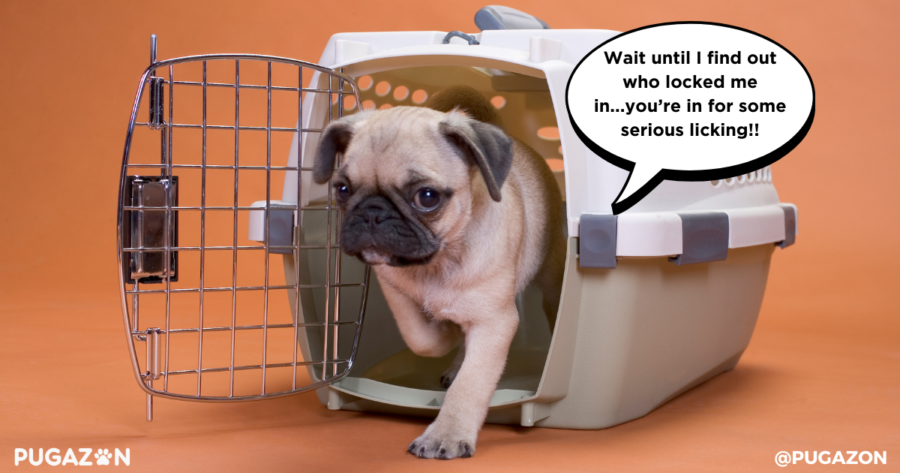
Crate training can be an effective tool for managing stubborn behavior in pugs. When used properly, the crate becomes a safe space where your pug can relax and reset, helping to reduce undesirable behaviors and improve their overall responsiveness to commands.
Why Crate Training Helps
Pugs often exhibit stubborn behavior due to anxiety, boredom, or overstimulation. A crate provides a calming environment where they can retreat when feeling overwhelmed. Crate training also reinforces boundaries and structure, both of which are key to curbing stubbornness.
Step-by-Step Crate Training for Stubborn Pugs
To successfully implement crate training, follow these steps:
- Step 1: Introduce the Crate Gradually
Place the crate in an area where your pug spends a lot of time. Allow them to explore it freely without forcing them inside. - Step 2: Make the Crate a Positive Space
Use treats, toys, and bedding to make the crate inviting. Feed your pug inside the crate to help them associate it with positive experiences. - Step 3: Start with Short Sessions
Begin by having your pug spend short periods of time in the crate while you’re nearby. Gradually increase the length of time they spend in the crate. - Step 4: Crate at Night
Once your pug is comfortable with the crate, consider using it as their sleeping space at night. This helps reinforce the idea that the crate is a safe and comfortable place.
Managing Stubbornness with Crate Timeouts
If your pug is being particularly stubborn during training or refuses to follow commands, using the crate as a calm-down space can help reset their behavior. This is not a punishment but rather a way to give them a break and remove them from overstimulation.
FAQs About Training Stubborn Pugs
Pugs are known for their independent streak, which can sometimes be mistaken for stubbornness. They are intelligent but can be selective when it comes to following commands, especially if they don’t see an immediate benefit. Stubbornness in pugs is often linked to a lack of motivation, which is why using positive reinforcement and consistency is essential in training.
Using high-value rewards, such as favorite treats or toys, is a great way to motivate a stubborn pug. Pugs are highly food-motivated, so offering a small, tasty treat immediately after they perform a desired behavior reinforces the idea that following commands leads to rewards. Praise and play can also be effective motivators.
Teaching recall (the “come” command) can be challenging, especially for stubborn pugs. Start by practicing in a distraction-free environment and use an excited, positive tone when calling them. Always reward your pug when they come to you, even if they take a while. Gradually introduce distractions as they become more consistent with the command.
If your pug is ignoring commands, it’s important to stay patient and avoid getting frustrated. Instead, assess whether your pug is distracted, bored, or not motivated enough. Refocus their attention using treats or toys, and try again. Keep sessions short to prevent your pug from becoming bored or overwhelmed.
Yes, crate training is a useful tool for managing stubborn behavior. A crate provides a safe, comfortable space where your pug can calm down and reset if they’re feeling overstimulated or resistant to training. Using the crate for short timeouts can also help curb stubborn behavior.
Absolutely. Leash training is possible with stubborn pugs, but it requires consistency and patience. Start by using positive reinforcement when your pug follows your lead on the leash. Reward them for walking next to you and use gentle corrections when they pull. Keep leash training sessions short and positive to maintain engagement.
For stubborn pugs, training sessions should be kept short—around 5-10 minutes per session. Pugs have relatively short attention spans, and keeping sessions brief helps prevent boredom. You can conduct multiple short sessions throughout the day rather than one long training period.
Pugs are highly motivated by food, so they may be more likely to follow commands when they know a treat is involved. To reduce reliance on treats, gradually phase them out by using them intermittently and increasing the use of verbal praise or affection as rewards.
Common mistakes include inconsistency, punishing the pug for not following commands, and using harsh tones or frustration during training. Stubborn pugs respond best to positive reinforcement and consistency, so it’s important to maintain a calm and patient demeanor throughout the process.
Yes, socialization plays an important role in improving your pug’s overall behavior and responsiveness to commands. Introducing your pug to well-behaved dogs in controlled settings helps them develop better social skills and can reduce stubborn tendencies over time.


